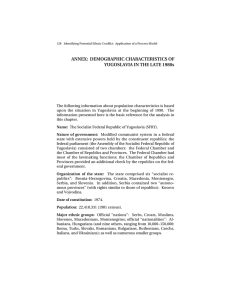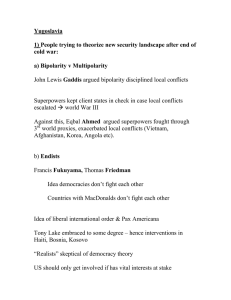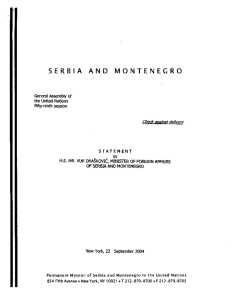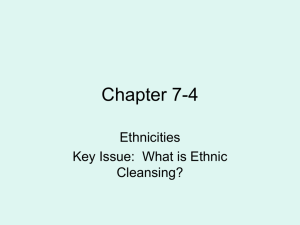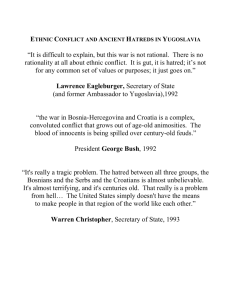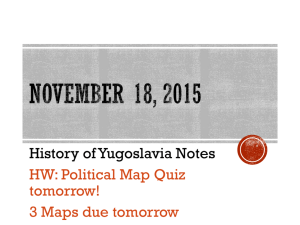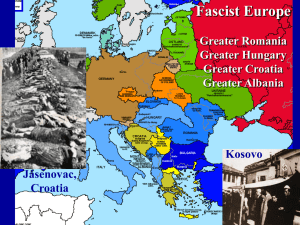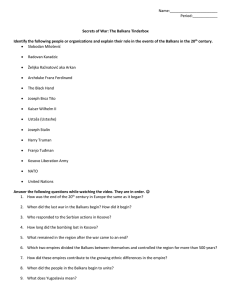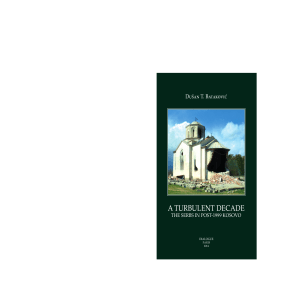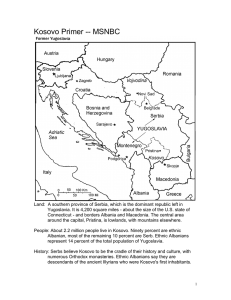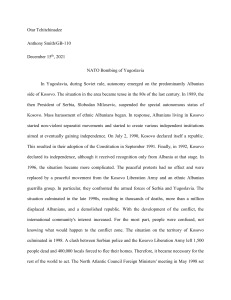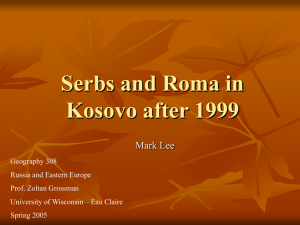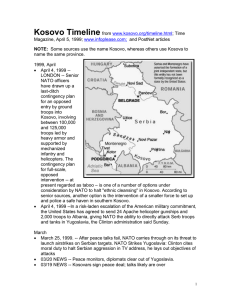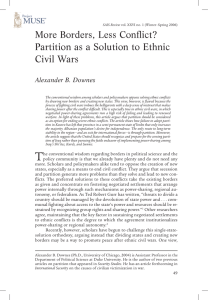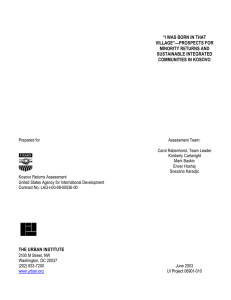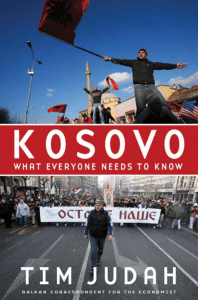17.523: Ethnicity and Race in World Politics-Fall 2005 Prof. M. Nobles Rwanda
advertisement
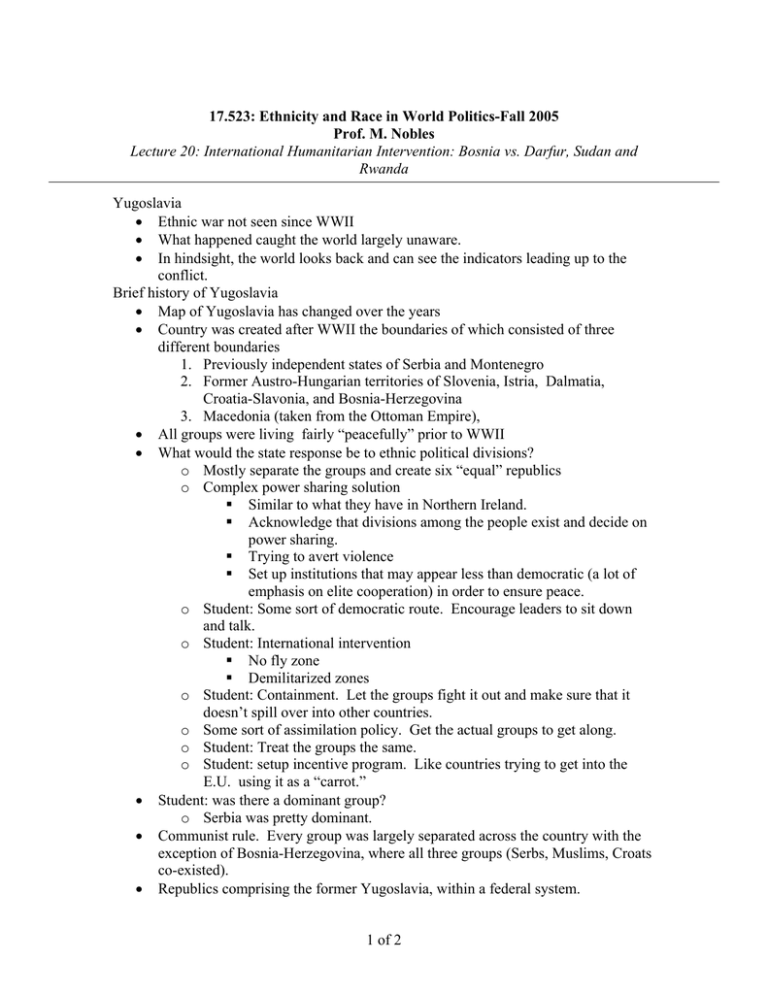
17.523: Ethnicity and Race in World Politics-Fall 2005 Prof. M. Nobles Lecture 20: International Humanitarian Intervention: Bosnia vs. Darfur, Sudan and Rwanda Yugoslavia • Ethnic war not seen since WWII • What happened caught the world largely unaware. • In hindsight, the world looks back and can see the indicators leading up to the conflict. Brief history of Yugoslavia • Map of Yugoslavia has changed over the years • Country was created after WWII the boundaries of which consisted of three different boundaries 1. Previously independent states of Serbia and Montenegro 2. Former Austro-Hungarian territories of Slovenia, Istria, Dalmatia, Croatia-Slavonia, and Bosnia-Herzegovina 3. Macedonia (taken from the Ottoman Empire), • All groups were living fairly “peacefully” prior to WWII • What would the state response be to ethnic political divisions? o Mostly separate the groups and create six “equal” republics o Complex power sharing solution Similar to what they have in Northern Ireland. Acknowledge that divisions among the people exist and decide on power sharing. Trying to avert violence Set up institutions that may appear less than democratic (a lot of emphasis on elite cooperation) in order to ensure peace. o Student: Some sort of democratic route. Encourage leaders to sit down and talk. o Student: International intervention No fly zone Demilitarized zones o Student: Containment. Let the groups fight it out and make sure that it doesn’t spill over into other countries. o Some sort of assimilation policy. Get the actual groups to get along. o Student: Treat the groups the same. o Student: setup incentive program. Like countries trying to get into the E.U. using it as a “carrot.” • Student: was there a dominant group? o Serbia was pretty dominant. • Communist rule. Every group was largely separated across the country with the exception of Bosnia-Herzegovina, where all three groups (Serbs, Muslims, Croats co-existed). • Republics comprising the former Yugoslavia, within a federal system. 1 of 2 o Serbia Kosovo was an autonomous region of Serbia. o Croatia o Slovenia o Bosnia-Herzegovina o Macedonia o Montenegro • What does a federal system do? Potentially keeps the peace. Allows for a certain amount of autonomy. o U.S. is a federal system. o You have more devolution of power and give substantial amount of power to the states. • While there were still separate ethnic identities, they were superseded by the national Yugoslavia identity. o Which is underscored by the communism ideals. • Kosovo o Under Tito, it was set up where Kosovo had veto power over what was going on in Serbia. This was an administrative and political problem. There was an ethnic Albanian majority in Kosovo. o Kosovo has some of the most sacred sites of the Serbs o Serbs never liked that Albanian demographic domination. o About 80% of Kosovo is Albanian. o Albania is right next to Kosovo. o Although ethnically identified with Albania, Albanians Kosovars wouldn’t necessarily want to be forced out of Kosovo and into Albania. Similar to Turks in Germany Kurds in Iraq. • Yugoslavia began to have tensions within the arrangement that were manifested in economic performance and political influence Some of the republics were doing better than others. With the absence of an overriding ideology, communism wilted. International community responded how to the war? o They weren’t pleased with the possible disintegration of Yugoslavia. o Once you have international recognition, • Although these republics had ethnic majorities, the minority population was pretty large. • Which group had the most at stake in o Muslims because they didn’t have anywhere to go. o Serbians back to Serbia, Croats back to Croatia. War ended in 1985, the Dayton accords have been settled. What could the international community have done differently? 2 of 2
